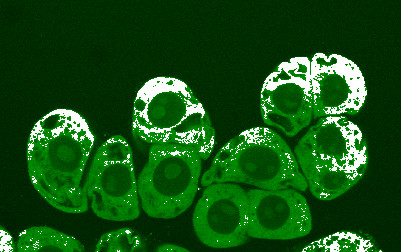Nitric oxide (NO) and nitrous oxide (N2O) are atmospheric gases with distinct properties and uses. While they may sound similar, they have different chemical formulas and play different roles in various applications. It is important to understand the differences between these two gases to fully grasp their significance in different contexts.
Key Takeaways:
- Nitric oxide (NO) and nitrous oxide (N2O) are atmospheric gases with different chemical formulas and properties.
- Nitric oxide is produced as a by-product of fossil fuel burning and lightning, while nitrous oxide is commonly known as laughing gas.
- Nitric oxide is used as a signaling gas in biological systems, while nitrous oxide is used as an anesthetic and oxidizer.
- Nitric oxide can react with oxygen to form nitrogen dioxide, contributing to ozone depletion, while nitrous oxide is considered a greenhouse gas and air pollutant.
- Understanding the differences between nitric oxide and nitrous oxide is crucial in comprehending their various uses and environmental impacts.
What is Nitric Oxide?
Nitric oxide is a colorless gas that is produced as a by-product of fossil fuel burning and lightning. It plays a crucial role in various biological processes and is considered a signaling gas in the body. Nitric oxide is not only present in the atmosphere but also in the human body, where it acts as a vasodilator, helping to relax and widen blood vessels. This property makes it important for maintaining healthy blood flow and regulating blood pressure.
Besides its physiological functions, nitric oxide also has industrial applications. It is used in the production of nitric acid, which is a component of fertilizers, explosives, and chemicals. Nitric oxide is also used in the manufacturing of semiconductors, and it can be found in car engines, where it assists in reducing emissions.
In recent years, researchers have discovered potential therapeutic benefits of nitric oxide. It has been found to have anti-inflammatory and antimicrobial properties, which may have implications for treating various diseases and infections. Additionally, nitric oxide therapy has shown promise in improving cardiovascular health and enhancing exercise performance.
Overall, nitric oxide is a versatile gas with both physiological and industrial significance. Its ability to impact various bodily functions, as well as its potential therapeutic applications, make it an intriguing area of research. Understanding the role and benefits of nitric oxide is crucial for unlocking its full potential for human health and industrial applications.
Below is a table summarizing the key properties and uses of nitric oxide:
| Properties | Uses |
|---|---|
| Colorless gas | Signal molecule in the body |
| Produced as a by-product of fossil fuel burning and lightning | Used in the production of nitric acid |
| Vasodilator, regulates blood flow | Industrial applications in manufacturing and car engines |
| Potential therapeutic benefits | Anti-inflammatory and antimicrobial properties |
What is Nitrous Oxide?
Nitrous oxide, also known as laughing gas, is a colorless and non-flammable gas. It is commonly used in medical and dental settings as an anesthetic and analgesic for pain relief during surgeries and procedures. Nitrous oxide is known for its ability to induce a state of euphoria, hence the term “laughing gas.”
In addition to its medical uses, nitrous oxide also has applications in other fields. It is widely used as an oxidizer in engines and rockets due to its ability to support combustion. This gas provides a significant boost to engine performance by delivering more oxygen to the fuel. Nitrous oxide is also used in the production of whipped cream, as it acts as a propellant and helps create a light and airy texture.
Despite its usefulness, nitrous oxide is considered a greenhouse gas and air pollutant. It contributes to climate change and acts as a potent ozone-depleting substance. The environmental impact of nitrous oxide stems from its ability to trap heat in the atmosphere and its role in the breakdown of ozone molecules. Therefore, it is crucial to monitor and minimize the release of nitrous oxide into the environment.
Summary:
| Properties of Nitrous Oxide | |
|---|---|
| Color | Colorless |
| Flammability | Non-flammable |
| Main Uses | Medical anesthesia and analgesic, oxidizer in engines and rockets, propellant in whipped cream production |
| Environmental Impact | Greenhouse gas, air pollutant, contributor to climate change and ozone depletion |
In conclusion, nitrous oxide is a versatile gas with various applications in medicine, industry, and culinary arts. While it provides valuable benefits in these areas, it is essential to mitigate its environmental impact and explore sustainable alternatives.
Unique Properties of Nitric Oxide
Nitric oxide exhibits specific properties that make it a crucial signaling molecule in biological processes. As a colorless gas, it is highly reactive and can easily penetrate cell membranes, allowing it to interact with various biological targets. One of its most important functions is as a vasodilator, meaning it relaxes and widens blood vessels, improving blood flow and regulating blood pressure.
Furthermore, nitric oxide plays a vital role in the immune system, acting as a defense mechanism against infections. It helps regulate the activity of immune cells, such as macrophages and neutrophils, by influencing their recruitment and activation. Nitric oxide also possesses antioxidant properties, which enables it to protect cells from damage caused by free radicals and oxidative stress.
In addition to its biological functions, the unique properties of nitric oxide contribute to its environmental impact. Nitric oxide acts as a precursor to nitrogen dioxide (NO2), a major component of smog and a contributor to air pollution. Through a series of reactions in the atmosphere, nitric oxide can react with oxygen to form nitrogen dioxide, which can then undergo further reactions to generate ozone, a harmful pollutant.
Table 1: Properties of Nitric Oxide
| Property | Description |
|---|---|
| Chemical Formula | NO |
| Physical State | Colorless gas |
| Reactivity | Highly reactive |
| Biological Role | Crucial signaling molecule, vasodilator, immune regulator |
| Environmental Impact | Contributes to air pollution and ozone depletion |
In conclusion, nitric oxide possesses unique properties that make it indispensable in biological processes and environmental dynamics. Its versatility as a signaling molecule and its role in maintaining vascular function and regulating the immune system highlight its importance in human health. However, its reactivity and contribution to air pollution emphasize the need for responsible management of nitric oxide emissions to mitigate its negative environmental impact.
Unique Properties of Nitrous Oxide
Nitrous oxide possesses certain qualities that make it suitable for use as an anesthetic and in various industrial applications. This colorless, non-flammable gas has a unique combination of properties that set it apart from other gases.
One of the key characteristics of nitrous oxide is its anesthetic properties. It has been widely used in medical and dental procedures as an anesthetic and analgesic for many years. Nitrous oxide is known for its ability to induce a state of conscious sedation, providing pain relief and relaxation without causing a complete loss of consciousness. This makes it particularly valuable in settings where patients need both pain relief and the ability to cooperate with medical professionals.
In addition to its medical applications, nitrous oxide also has industrial uses. It is commonly used as an oxidizer in rockets and engines due to its ability to support combustion. Its high oxygen content makes it a valuable component in rocket propellants and other applications where a ready source of oxygen is needed. Furthermore, nitrous oxide is used in the production of whipped cream and aerosol propellants, giving it a role in the food and cosmetic industries.
The unique chemical properties of nitrous oxide make it a versatile gas with a range of practical applications. However, it is important to note that nitrous oxide is also classified as a greenhouse gas and air pollutant. Its release into the atmosphere contributes to climate change and can have adverse effects on air quality. Therefore, it is crucial to use and dispose of nitrous oxide responsibly and explore alternative options to mitigate its environmental impact.
| Properties | Nitrous Oxide |
|---|---|
| Chemical Formula | N2O |
| Color | Colorless |
| Flammability | Non-flammable |
| Medical Use | Anesthetic |
| Industrial Use | Oxidizer, propellant |
| Environmental Impact | Greenhouse gas, air pollutant |
Environmental Impact of Nitric Oxide and Nitrous Oxide
Both nitric oxide and nitrous oxide have implications for the environment due to their effects as greenhouse gases and pollutants. Nitric oxide (NO) is a by-product of fossil fuel burning and lightning, contributing to the formation of nitrogen dioxide (NO2) which depletes the ozone layer. These gas emissions from human activities, such as industrial processes and transportation, significantly contribute to air pollution and smog formation.
Nitrous oxide (N2O), commonly known as laughing gas, is a powerful greenhouse gas with approximately 300 times the warming potential of carbon dioxide. It is released into the atmosphere through natural processes like microbial activity in soils and oceans, as well as human activities such as agricultural practices, fossil fuel combustion, and industrial processes.
According to the Intergovernmental Panel on Climate Change (IPCC), nitrous oxide is currently the third-largest contributor to global warming after carbon dioxide and methane.
Both gases have adverse effects on the environment. Increased concentrations of nitric oxide and nitrogen dioxide can lead to respiratory problems, smog formation, and acid rain. Nitric oxide emissions also contribute to the formation of tropospheric ozone, a major air pollutant that affects human health and ecosystems. Nitrous oxide, on the other hand, not only contributes to global warming but also depletes the ozone layer, increasing the harmful ultraviolet radiation reaching the Earth’s surface.
It is essential to reduce the emissions of both nitric oxide and nitrous oxide to mitigate their environmental impacts. Strategies such as improving energy efficiency, promoting renewable energy sources, and implementing proper waste management practices can help reduce the release of these gases into the atmosphere. Additionally, technological advancements in industrial processes and transportation can also contribute to minimizing emissions of nitric oxide and nitrous oxide, thereby protecting both human health and the environment.
| Gas | Environmental Impact |
|---|---|
| Nitric Oxide (NO) | Contributes to air pollution, smog formation, acid rain, and tropospheric ozone formation. |
| Nitrous Oxide (N2O) | Contributes to global warming, depletion of the ozone layer, and increased ultraviolet radiation. |
Nitric Oxide vs. Nitrous Oxide: A Comparison
To better understand the disparities between nitric oxide and nitrous oxide, it is important to compare the two gases in various aspects. While both gases share the common element of nitrogen, their chemical formulas, properties, and uses differ significantly.
Firstly, let’s explore their properties. Nitric oxide (NO) is a colorless gas produced through the combustion of fossil fuels and in natural processes such as lightning. It plays a crucial role as a signaling gas in biological systems. On the other hand, nitrous oxide (N2O), also known as laughing gas, is a colorless and non-flammable gas. It is primarily used as an anesthetic and analgesic in medical procedures, as well as an oxidizer in engines and rockets.
The uses of nitric oxide and nitrous oxide further distinguish them. Nitric oxide has various applications in the medical field, such as treating pulmonary hypertension and supporting cardiovascular health. It is also utilized in scientific research. Conversely, nitrous oxide finds extensive use as an anesthetic during dental and surgical procedures, providing pain relief and inducing unconsciousness. Additionally, it serves as a propellant in aerosol products and as a recreational drug due to its euphoric effects when inhaled in small quantities.
From an environmental perspective, both gases have distinct impacts. Nitric oxide is a precursor to nitrogen dioxide, contributing to the formation of tropospheric ozone, which is harmful to human health and ecosystems. It also contributes to acid rain. Nitrous oxide, on the other hand, acts as a potent greenhouse gas, trapping heat in the atmosphere and contributing to climate change. Moreover, it is an air pollutant, degrading air quality and posing risks to human health.
| Aspects | Nitric Oxide (NO) | Nitrous Oxide (N2O) |
|---|---|---|
| Chemical Formula | NO | N2O |
| Color | Colorless | Colorless |
| Properties | Signaling gas, involved in biological processes | Anesthetic, oxidizer, recreational drug |
| Uses | Medical applications, scientific research | Medical anesthesia, propellant, recreational use |
| Environmental Impact | Contributes to ozone depletion, acid rain | Greenhouse gas, air pollutant |
In conclusion, although nitric oxide and nitrous oxide share the element nitrogen, they possess distinct chemical formulas, properties, uses, and environmental impacts. Understanding the disparities between these two gases is crucial for both scientific and practical purposes, enabling us to further explore their potential benefits while mitigating their negative effects.
Conclusion
Understanding the difference between nitric oxide (NO) and nitrous oxide (N2O) is essential for recognizing their unique properties, uses, and impacts on human health and the environment.
Nitric oxide is a colorless gas that is produced as a by-product of fossil fuel burning and lightning. It plays a crucial role as a signaling gas in biological systems. On the other hand, nitrous oxide, commonly known as laughing gas, is used as an anesthetic and analgesic in surgery, as well as an oxidizer in engines and rockets.
Both nitric oxide and nitrous oxide have different environmental impacts. Nitric oxide can react with oxygen to form nitrogen dioxide, contributing to ozone depletion. Additionally, it is considered a greenhouse gas and has air pollutant properties. Nitrous oxide, on the other hand, is also classified as a greenhouse gas and is known to be a potent contributor to climate change.
It is important to note that the absorption and uptake of these gases differ. Nitrous oxide follows a ventilation-perfusion model, while nitric oxide’s uptake is higher than predicted due to chemical reactions in the nasal tissues and blood.
By understanding the differences between nitric oxide and nitrous oxide, we can appreciate their distinct uses, environmental impacts, and effects on human health. This knowledge is crucial in making informed decisions and taking necessary measures to minimize their negative consequences.
FAQ
Q: What is the difference between nitric oxide and nitrous oxide?
A: Nitric oxide (NO) and nitrous oxide (N2O) are atmospheric gases that have different chemical formulas and properties. Nitric oxide is a colorless gas that is produced as a by-product of fossil fuel burning and lightning. It can react with oxygen to form nitrogen dioxide, which contributes to ozone depletion. Nitric oxide is also used as a signaling gas in biological systems. On the other hand, nitrous oxide is a colorless, non-flammable gas that is commonly known as laughing gas. It is used as an anesthetic and analgesic in surgery and as an oxidizer in engines and rockets. Nitrous oxide is considered a greenhouse gas and air pollutant. The absorption of nitrous oxide in the nose follows a ventilation-perfusion model, while the uptake of nitric oxide is higher than predicted due to chemical reactions in the nasal tissues and blood. These gases have different uses and environmental impacts.
Q: What is nitric oxide?
A: Nitric oxide (NO) is a colorless gas that is produced as a by-product of fossil fuel burning and lightning. It can react with oxygen to form nitrogen dioxide, which contributes to ozone depletion. Nitric oxide is also used as a signaling gas in biological systems.
Q: What is nitrous oxide?
A: Nitrous oxide (N2O) is a colorless, non-flammable gas that is commonly known as laughing gas. It is used as an anesthetic and analgesic in surgery and as an oxidizer in engines and rockets. Nitrous oxide is considered a greenhouse gas and air pollutant.
Q: What are the unique properties of nitric oxide?
A: Nitric oxide has unique properties, such as its role as a signaling gas in biological systems.
Q: What are the unique properties of nitrous oxide?
A: Nitrous oxide has unique properties, such as its use as an anesthetic and an oxidizer.
Q: What is the environmental impact of nitric oxide and nitrous oxide?
A: Both nitric oxide and nitrous oxide have environmental impacts. Nitric oxide contributes to ozone depletion when it reacts with oxygen to form nitrogen dioxide. Nitrous oxide is considered a greenhouse gas and air pollutant.
Q: How do nitric oxide and nitrous oxide differ?
A: Nitric oxide and nitrous oxide differ in their chemical formulas, properties, uses, and environmental impacts. Nitric oxide is a by-product of fossil fuel burning and lightning, used as a signaling gas, and contributes to ozone depletion. Nitrous oxide, on the other hand, is used as an anesthetic and an oxidizer, and is considered a greenhouse gas and air pollutant.
 Skip to main content
Skip to main content


